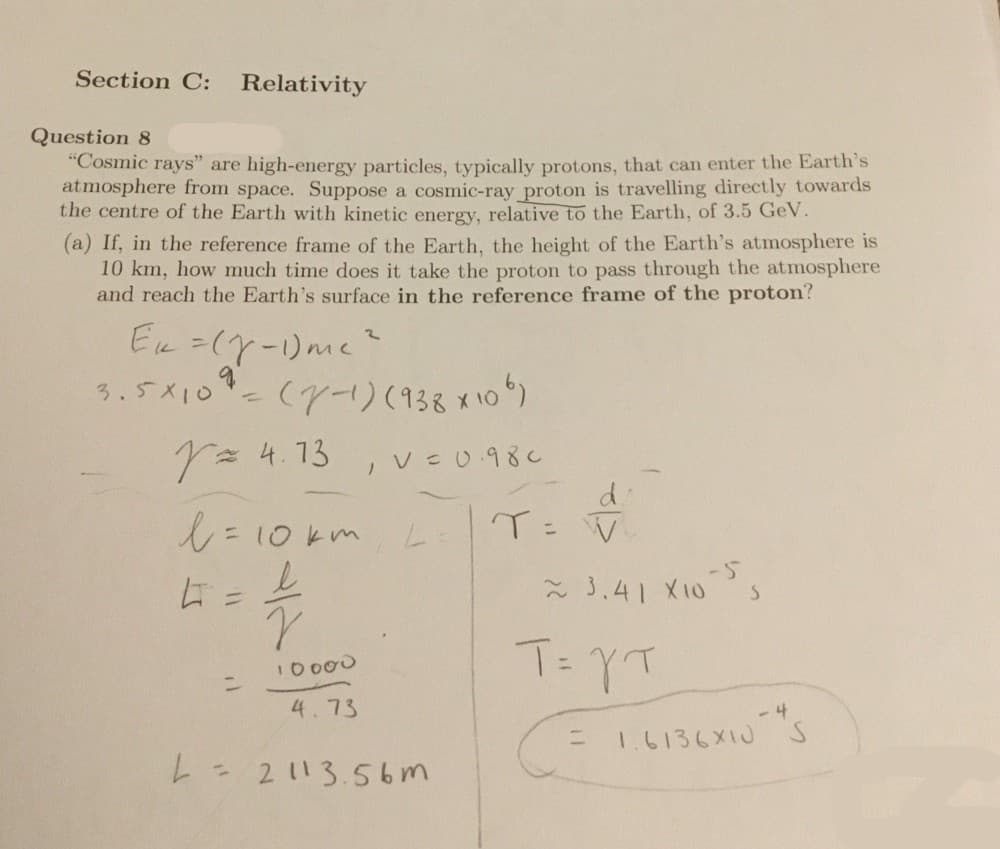Section C: Relativity Question 8 "Cosmic rays" are high-energy particles, typically protons, that can enter the Earth's atmosphere from space. Suppose a cosmic-ray proton is travelling directly towards the centre of the Earth with kinetic energy, relative to the Earth, of 3.5 GeV. (a) If, in the reference frame of the Earth, the height of the Earth's atmosphere is 10 km, how much time does it take the proton to pass through the atmosphere and reach the Earth's surface in the reference frame of the proton?
Section C: Relativity Question 8 "Cosmic rays" are high-energy particles, typically protons, that can enter the Earth's atmosphere from space. Suppose a cosmic-ray proton is travelling directly towards the centre of the Earth with kinetic energy, relative to the Earth, of 3.5 GeV. (a) If, in the reference frame of the Earth, the height of the Earth's atmosphere is 10 km, how much time does it take the proton to pass through the atmosphere and reach the Earth's surface in the reference frame of the proton?
Related questions
Question

Transcribed Image Text:Section C:
Relativity
Question 8
"Cosmic rays" are high-energy particles, typically protons, that can enter the Earth's
atmosphere from space. Suppose a cosmic-ray proton is travelling directly towards
the centre of the Earth with kinetic energy, relative to the Earth, of 3.5 GeV.
(a) If, in the reference frame of the Earth, the height of the Earth's atmosphere is
10 km, how much time does it take the proton to pass through the atmosphere
and reach the Earth's surface in the reference frame of the proton?
Er =(7ー)mc
3.5X10-(7-1)(938 x 10)
= 4.13, v =0986
レ=10km
- 3.41 X10
ニ
I0 000
ニ
4.73
-4
E 1.6136X1J 's
L= 2113.5bm
Expert Solution
Step by step
Solved in 9 steps with 9 images
